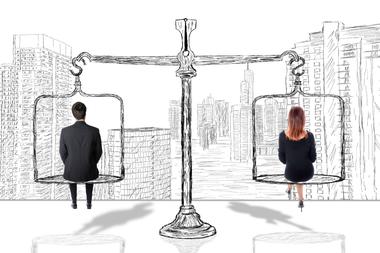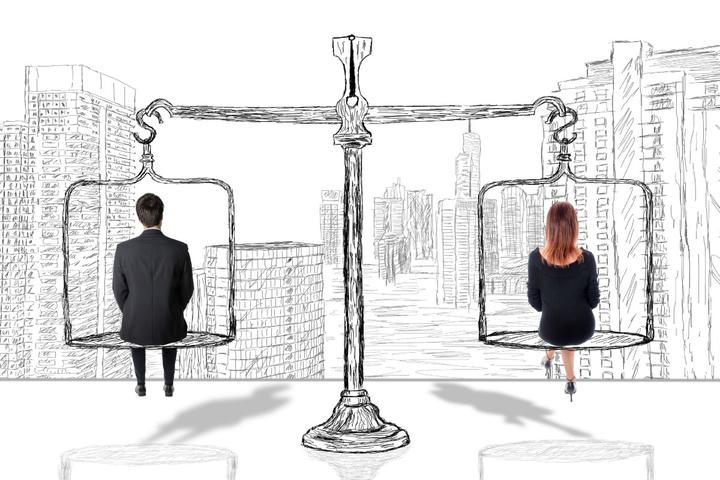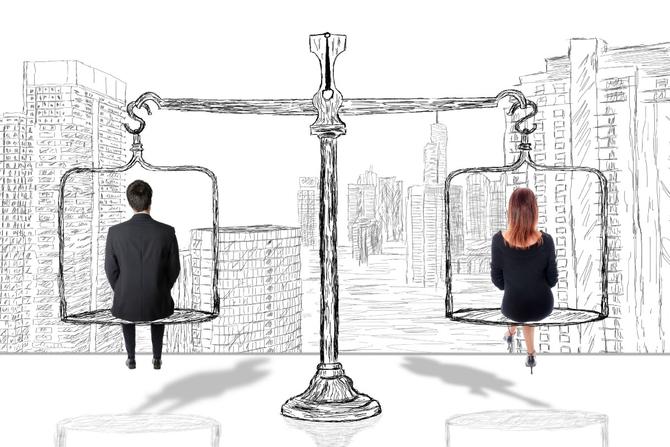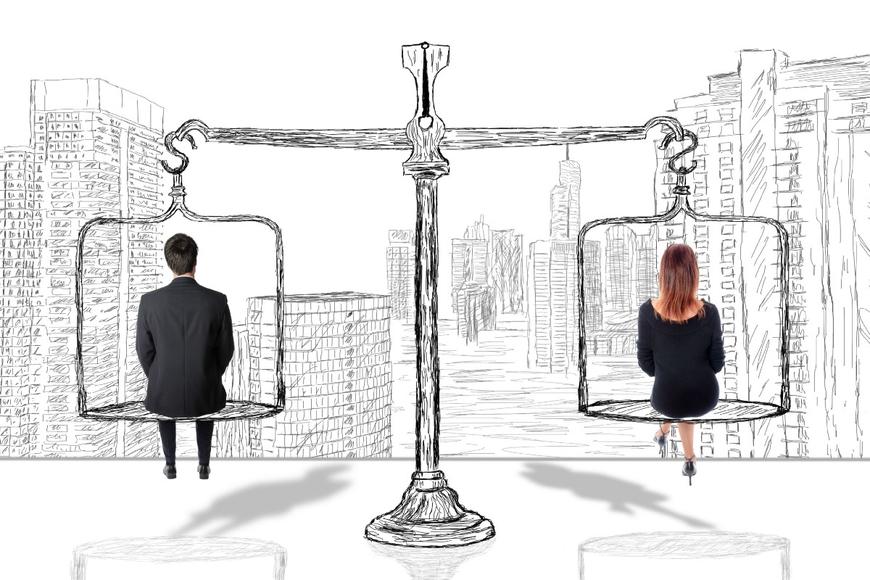



Everyone likes to talk about women, but few people are aware of their rights, and especially their existence against the background of the male population. So, for example, the phrase “woman and politics” causes a stormy negative reaction among many people. After all, in many minds the idea that the woman's place in the kitchen is firmly rooted. However, it is worth to say that the role of women in modern society is gradually increasing. In all countries of the world, their share in the economy, politics, culture, public life is steadily increasing. It would seem that the twenty-first century, emancipation, equality of men and women, and even a change of roles, but in the labor market gender discrimination is in full bloom. Despite the fact that women often show themselves as self-sufficient, smart, strong, with well-developed logical thinking and business acumen, the attitude of employers to them is ambiguous. According to Canadian statistics, only 27% of seats belong to women (Facts About Women and Leadership). Every day, one has to face a number of serious problems, which testify to the humiliating position of women in comparison with men. One of the serious problems is discrimination in hiring. This problem is quite acute. Many employers want to see the man in a particular position, and in the job and immediately indicate the desired gender, thereby destroying any chances of women to develop in this field. About 82% of women underrepresented in leadership roles (Facts About Women and Leadership). A woman is unreasonably exposed to discrimination in the workplace in leadership because a woman will be able to cope with a leading position on a broad scale, but medieval stereotypes do not let the minds of employers, most of whom are men. The issue of gender discrimination has been on the agenda for a long time, as it restricts women in achieving career goals and as a result entails a number of irreversible consequences.
Before considering the methods of combating racial discrimination in the workplace among women, it is worth considering the prerequisites for this problem. If one returns to the past a little, one immediately recalls the moments when the rights of women were completely infringed upon. Women did not have the right to vote even in the family, and there could be no question of participation in the elections. In Canada, before 1917 women could not vote ( Rights of women). Despite the fact that for a long time women fought for their rights and in every way they defended them, they are still considered incomplete (Rights of women). During the struggle for their rights, they have proved that they can be not only erudite opponents but also strong soldiers who in a suasion to protect themselves and their loved ones. Women in Canada are no exception. As well as others, they fought for their rights and became, over time, full members of society. At present, women can be found in various spheres of activity: from an architect to a handyman. Nevertheless, the issue of gender discrimination has not gone away but only worsened (Rights of women). Only women have civil rights and the opportunity to work, as here they are trapped by discrimination. However, there is Section 15 of the Canadian Charter of Rights and Freedoms that indicates that no one can be under discrimination (Rights of women). Women are often not given the opportunity to hold high positions, only because they are women. Discrimination is reflected not only in the fact that women can not hold high positions, but also because the wages of women are often much lower than for men (Rights of women). It is obvious that the imprint of the past does not give rest in the present. People tend to live by stereotypes, but this does not do any good. Because of stereotypes about the fact that the woman is the “keeper of the hearth,” woman is not trusted with an important job that woman can do perfectly (Rights of women). With signs of discrimination in the workplace and in terms of leadership, everything is clear; it is the reduction of wages, and the employment of lower positions, and a negligent attitude in the team. Nevertheless, there are also methods of how to deal with discrimination.
Attached file: Gender discrimination in workplaces.docx
Click download to get access to a full version of the paper




It is necessary to develop a policy of gender equality to eliminate discrimination based on sex. Equal rights and freedoms and equal opportunities for their implementation fixed in the Canadian law (Rights of women). Such state of affairs is called formal equality; however, it does not ensure true equality between women and men. That is why it is so important to take measures to change the situation. First of all, it is important to simplify the process of engaging in entrepreneurship and participation in financial relations for women. Practice shows women have lower levels of business ownership than men in Canada (Facts About Women and Leadership) Also, women less often than men open accounts in officially functioning financial organizations, as well as have deposits and receive loans. That is why, an alternative direction of income-generating activities for women can be entrepreneurship, which strengthens their economic position and, at the same time, leads to the creation of more jobs and the development of the private sector as a whole (MacDougall, et al.). It would develop leadership skills in women, which is very important in the light of the open opportunities (Will Team). Another way of overcoming gender inequality in the labor market is an opportunity for men to take parental leave. It would destroy the traditional perception of the roles of men and women. In that case, an employer could not automatically assume that it was a woman who could not properly devote herself to work and would not then be forced to hire and promote workers, primarily on the basis of their knowledge and skills rather than gender. One should remember, gender discrimination can manifest itself in the psychological aspects (Will Team). Stress, bad mood and lack of motivation are constant companions of discrimination victims. It does not only deprive them of self-respect and increases prejudice against them, but also affects their productivity and, consequently, the productivity of the workplace as a whole. It is clear, workers, who feel supported are more dedicated and more committed to their organizations. As a rule, the daily working atmosphere and labor relations improve if workers feel that they are valued (MacDougall, et al.). It, in turn, is likely to lead to a reduction in staff turnover, absences and sick leave, and hence significant cost savings for employers. The elimination of gender discrimination is essential for effective functioning of labor markets and competitiveness.
Gender discrimination must be addressed not only at the state, local government and organization levels but also at the international level. Recently, for example, the European Commission adopted the European Union Strategy in the field of equality between women and men (Facts About Women and Leadership). According to the strategy there were proposed measures based on a dual approach combining gender equality and the adoption of specific measures. Priority areas are equal economic independence, equality in decision-making, equal pay for equal work and work of equal value, dignity, respect for principles and ending gender-based violence, and gender equality in external activities (Rights of women).
Necessary measures include facilitating the development of women’s entrepreneurship and self-employment; assessment of the remaining gaps in the implementation of the right to family leave; promoting gender equality in all initiatives concerning the immigration and integration of migrants. It is also important to explore all possible ways with the aim of increasing the degree of narrowing the gap of pay and get a deeper understanding of the impact on the equal pay of such types of employment as part-time work and fixed-term contracts. It is important to support initiatives in respect of equal pay in the workplace, such as logos on equality as well as the development of tools for employers to correct unjustified gender-differentiated differences in payment of labor.
In conclusion, one should note the norms of Canadian legislation generally do not contain any discriminatory provisions in point of women and their labor rights. However, the inertial nature of social processes, the existence of a temporary gap between the adoption of measures in the interests of women and the obtaining of a meaningful result from their implementation, are objective factors hindering progress in raising the status of women, including in the sphere of employment and the labor market.